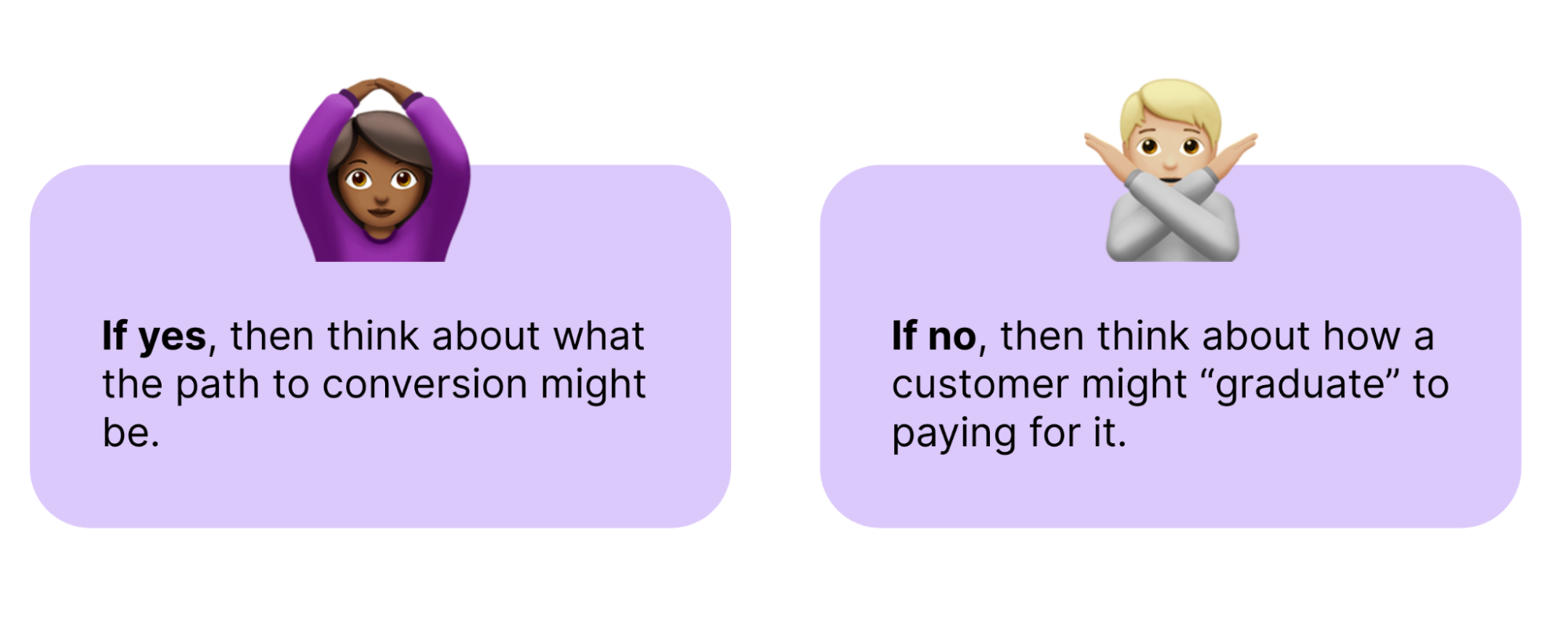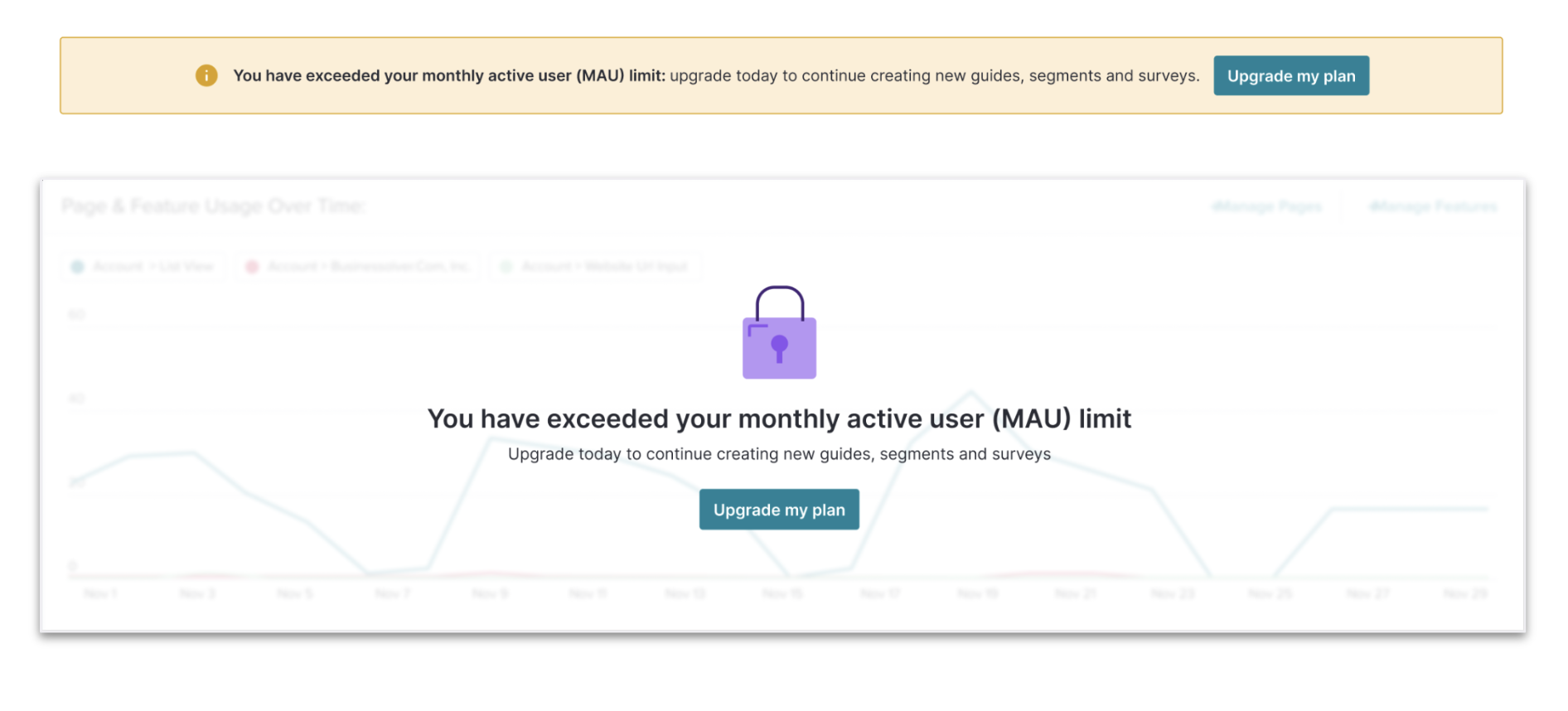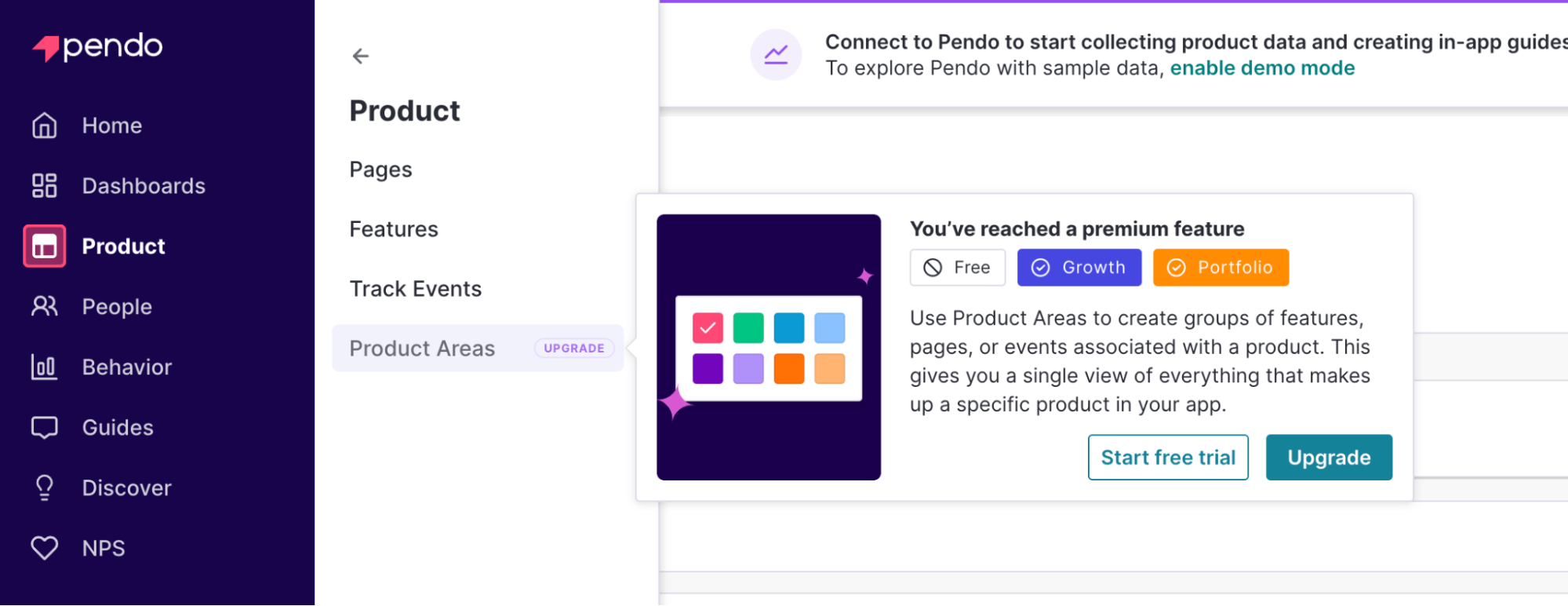As a product designer at Pendo, my journey into product-led growth (PLG) started when I was asked to participate in our web series, “The PLG Teardown.” In this series, we examined popular software products and dissected how effectively the company embodied PLG principles.
During our rehearsals, I got acquainted with the six principles of product-led growth that Pendo follows today. After that, I started noticing PLG everywhere—from trying free samples at Costco to downloading a free game on my phone.
Throughout the rest of this blog post, I want to focus on practical ways to get started with product-led growth tactics.
Free or paid, that is the question
The most foundational principle of product-led growth is providing a free user experience. This can come in the form of a free product with limited functionality, or a free trial that gives users full access to the product for a limited time.
When it comes to free products, one of the key questions you’ll continue to face is which features to include for free, and which to reserve for the paid version of the product.
If you’re considering adding a new feature to your product, start by simply asking: “Does this belong in the free version?” Yes or no.
If it’s a “yes,” think about how you can convert people who use this free feature into paying customers—does it provide enough value to make them want to pay later? If it does, then you should focus on showing those users why the premium version of the product is worth paying for. For example, you might give them a preview of what they’d get if they upgrade.
If it’s a “no,” that means this should be a paid feature. And in that case, you’ll need to think about how a user might discover this feature when using the free product. Even though it’s in the paid version, you still want users to know about it and understand its value so that they consider upgrading.
In both cases, the goal is to help users make upgrade choices that fit their needs. It’s about providing clear value for free, while also showing users the benefits of purchasing the paid product.
Part 1: Driving conversions with your free product
After determining which features are free, you should be focused on conversion and acquiring new paying customers to generate revenue for the business. In other words: How do you persuade a free user to purchase your product?
For example, at Pendo we provide a free version of our product with some limitations. Once users surpass a certain level of activity—like exceeding a monthly active users (MAU) limit—they’re locked out of certain Pendo Analytics capabilities and prompted to upgrade to regain access to the features.
The type and amount of activity you choose to use as your limit will depend on your product and the types of people who use it. In our case, we strategically chose MAU limits in order to support smaller businesses or startups initially—then as they grow, we expect them to transition to paid plans.
Part 2: Steering users from free to paid features
So, what if a feature doesn’t make sense for the free product and belongs squarely in the paid version? In that case, your goal should be to design a graduation path from free to paid features. A prime example of a feature we at Pendo deliberately didn’t include in our free product is Product Areas.
In our free product, we allow users to create unlimited page and feature tags. However, as the number of tags grows, managing them becomes a challenge. That’s where our paid feature, Product Areas, comes in. It lets users label and group similar areas of their product, making it easier to analyze behavior and provide guidance within specific parts of the product.
We could have made Product Areas free, but the value and benefit of labeling tags isn’t tangible in the early stages of using Pendo. Instead, the aim is to gently guide users towards embracing premium features, showcasing their value right as users interact with the product.
Remember, it’s not just about making features available—it’s about demonstrating why they’re worth paying for. By seamlessly integrating the discovery process into the product experience, users naturally grasp the benefits and keep coming back for more.
Think of it as creating a journey for your free users, where each interaction with your product leads them closer to understanding its value. Whether it’s through subtle prompts, informative tooltips, or personalized recommendations, every touchpoint is an opportunity to showcase the advantages of your premium features. As users become more immersed in the experience, they’ll begin to recognize the enhancements these features bring to their workflow or jobs to be done.
So, as you navigate the realm of product-led growth, remember to prioritize not just the what, but the why. Showcasing the value of your paid features and guiding users towards action ensures not only the growth of your product—but the growth of a loyal community of users who are invested in its success.
Ready to build—or optimize—your product-led growth strategy? Try Pendo for free today.



![[object Object]](https://cdn.builder.io/api/v1/image/assets%2F6a96e08774184353b3aa88032e406411%2F39f3ccde352b460cbf348ccc952054cd?format=webp)



